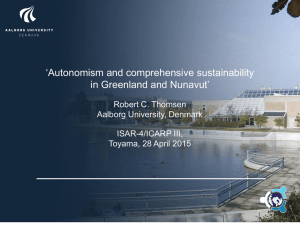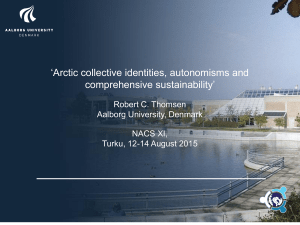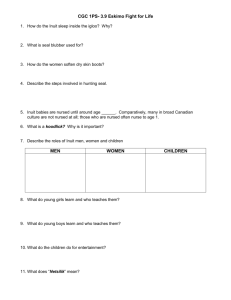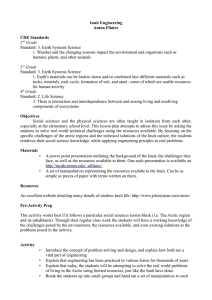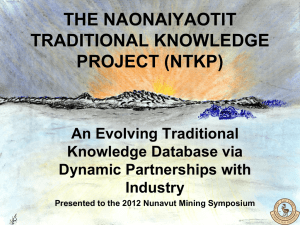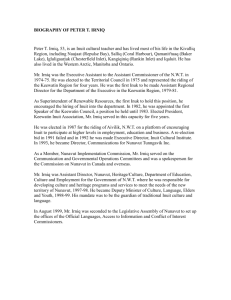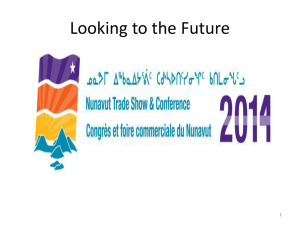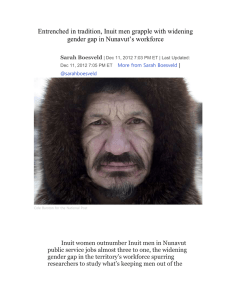Thomsen, Matchpoints 2015, Sove'ty-IndigRights
advertisement
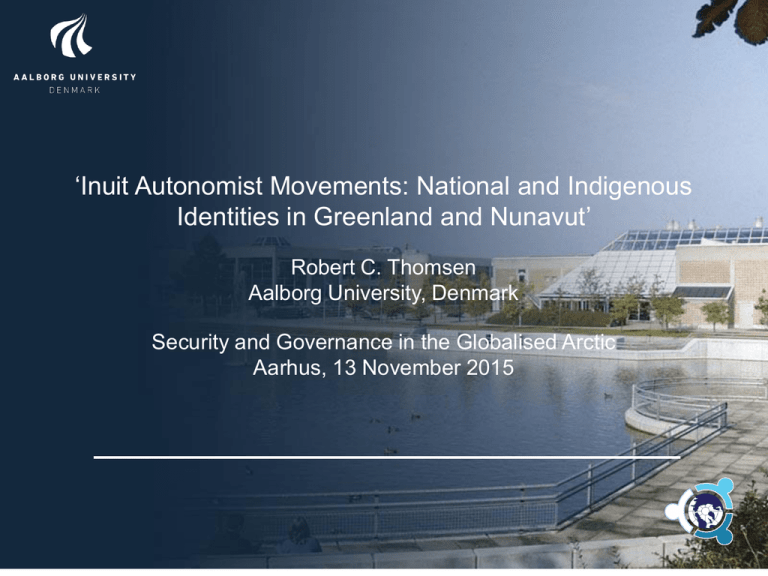
‘Inuit Autonomist Movements: National and Indigenous Identities in Greenland and Nunavut’ Robert C. Thomsen Aalborg University, Denmark Security and Governance in the Globalised Arctic Aarhus, 13 November 2015 Article 3 Indigenous peoples have the right of self-determination. By virtue of that right they freely determine their political status and freely pursue their economic, social and cultural development. Article 4 Indigenous peoples, in exercising their right to selfdetermination, have the right to autonomy or selfgovernment in matters relating to their internal and local affairs, as well as ways and means for financing their autonomous functions. (www.un.org/esa/socdev/unpfii/ documents/DRIPS_en.pdf) Article 26 Indigenous peoples have the right to the lands, territories and resources which they have traditionally owned, occupied or otherwise used or acquired. Greenland / Kalaallit Nunaat Nunavut Population: 57,000 (~85% Inuit/Inuit-Danish) Population: 32,000 (~85% of Nunavummiut are Inuit) Area: 2,038,722 km2 Area: 2,166,086 km2 Autonomism (nationalism) “Nationalism is primarily a political principle, which holds that the political and the national unit should be congruent” (Gellner, Nations and Nationalism, 1) ‘Autonomism’: Autonomy: “equivalent to selfgovernment in the context of an internal right to selfdetermination” (Loukacheva, The Arctic Promise, 6) Based on the perception of a national right to self-determination, but the means and the goals may differ from those of ‘classic’ nationalist movements. Different perceptions of ‘peoplehood’ (who belongs to the collectivity) => Different visions (autonomist demands) Inuit collective identities and autonomisms Pan-Inuit collective, indigenous identity (ICC) - Demands for the recognition of the rights of an indigenous transnational ‘Inuit polity’ (Shadian, 2014: 5) “Though Inuit live across a far-reaching circumpolar region, we are united as a single people. […] Inuit are an indigenous people […]. Central to our rights as a people is the right to self-determination. […] Recognition and respect for our right to selfdetermination is developing at varying paces and in various forms in the Arctic states in which we live.” (ICC 2009) Inuit collective identities and autonomisms Local Inuit collective identity (Nunavummiut) - Demands for inclusion, with the recognition of indigenous minority rights. “The Inuit of Nunavut see themselves as a part of Canada and are interested in further devolution of powers and in stronger cooperation and partnership [within existing] federal structures.” (Loukacheva, 2007: 16) “Inuit exchanged Aboriginal title to all their traditional land in the Nunavut Settlement Area for the rights and benefits set out in the NLCA […]. NTI coordinates and manages Inuit responsibilities set out in the NLCA and ensures that the federal and territorial governments fulfil their obligations.” (Nunavut Tunngavik Incorporated, 2015) Inuit collective identities and autonomisms National (Inuit) identity (Greenlanders of Kalaallit Nunaat) - Demands for the recognition of inherent national rights of selfgovernment; ultimately, full political independence “Recognising that the people of Greenland is a people pursuant to international law with the right of self-determination […]. Decision regarding Greenland’s independence shall be taken by the people of Greenland […]. Independence for Greenland shall imply that Greenland assumes sovereignty over the Greenland territory.” (‘Act on Greenland Self-Government’, 2009) Early findings * There is much difference in the way ‘Inuitness’ is constructed across the Arctic, thus also diverging perceptions of the rights that can be claimed as a consequence of Indigeneity. * In the longer term, different visions may cause some conflict between Inuit in the Arctic. Certain manifestations of ‘indigeneity’ and autonomism /nationalism can be argued to constitute opposing positions, and thus could be harbingers of potential conflict between Inuit. * When central governments take the position that Indigenous peoples are basically entitled to some form of self-determination, solutions for sustainable political-constitutional and socio-cultural development must be as diverse as the Inuit indigenous/national collectivities -- and the demands, they seek to address.

